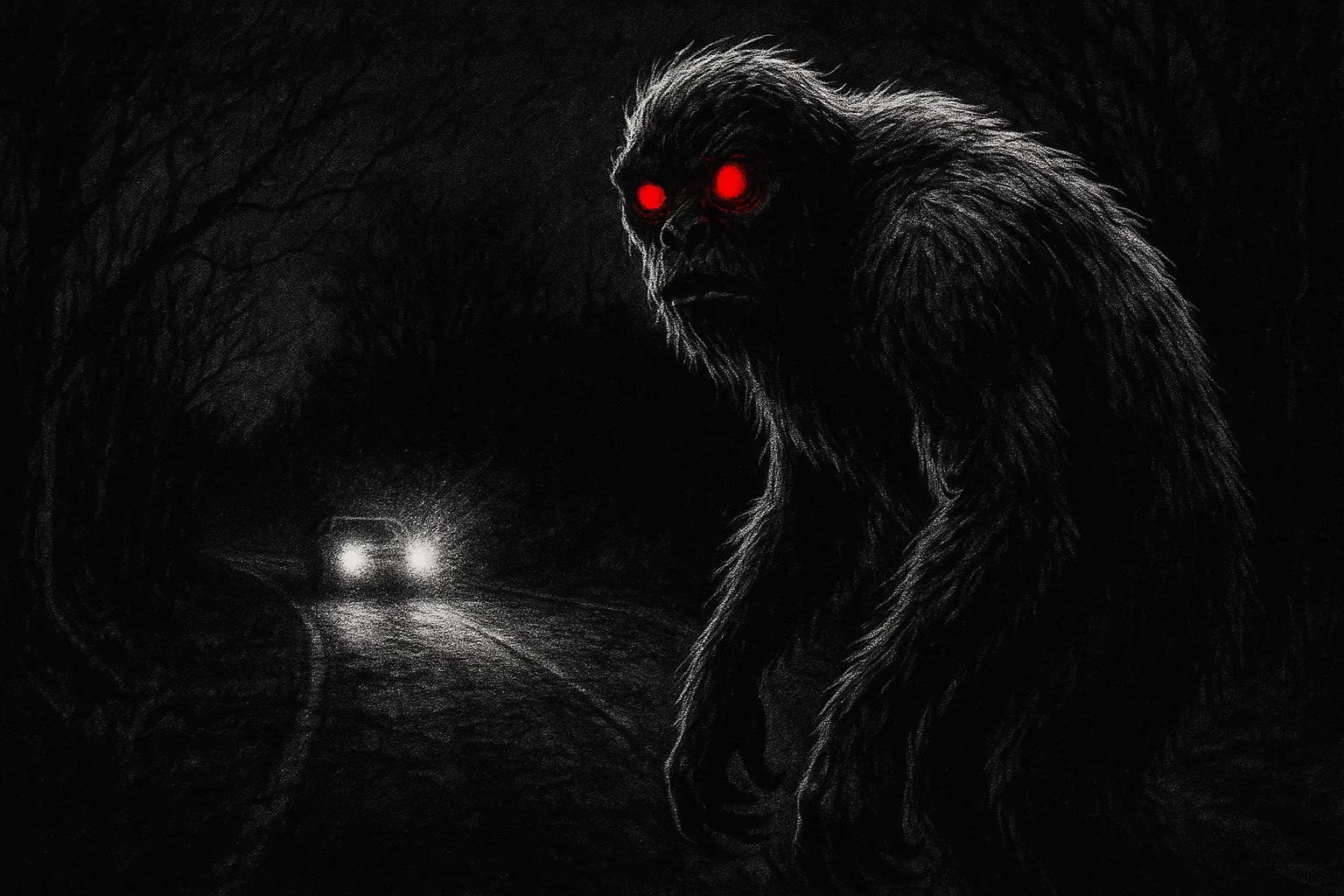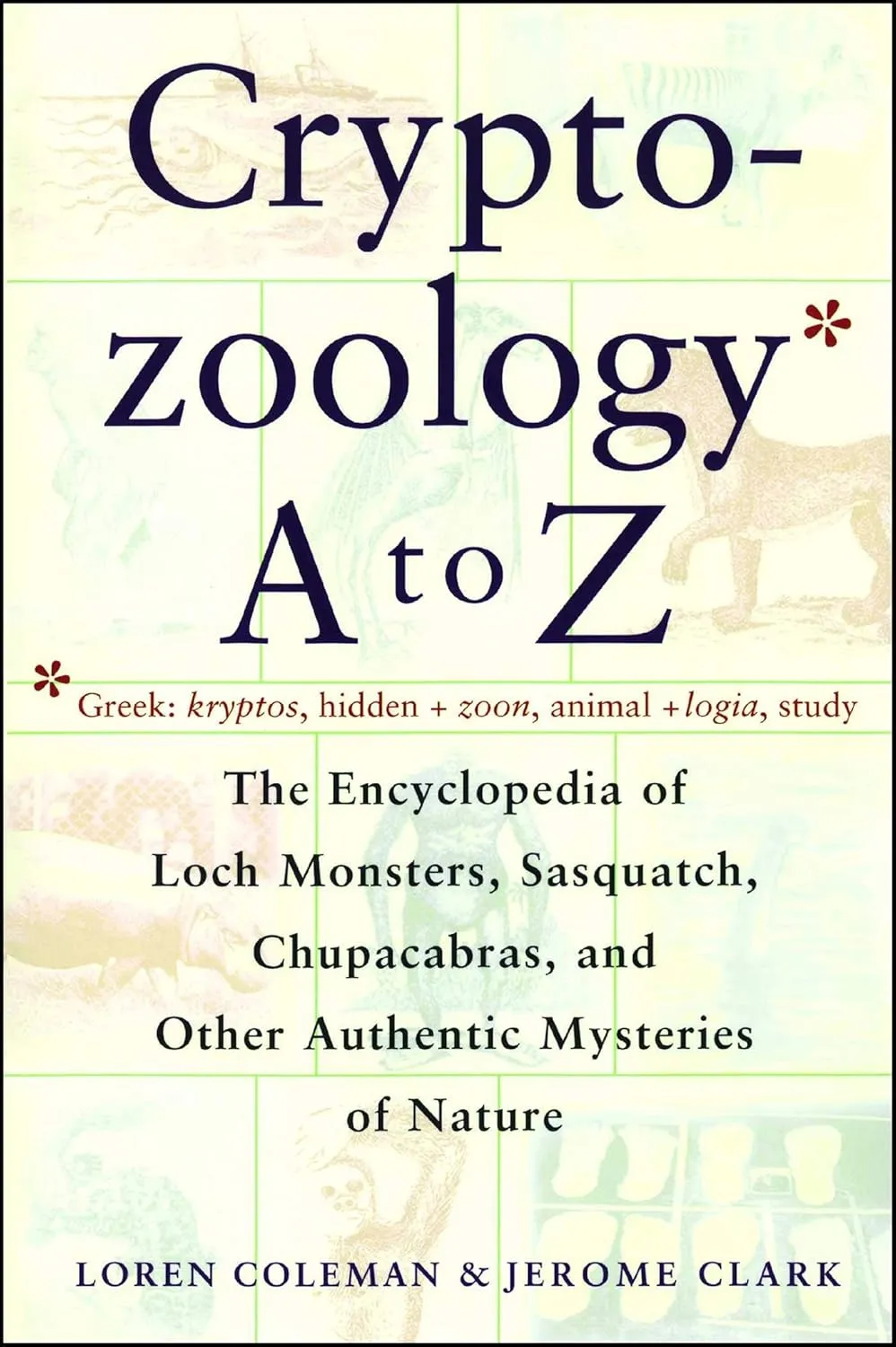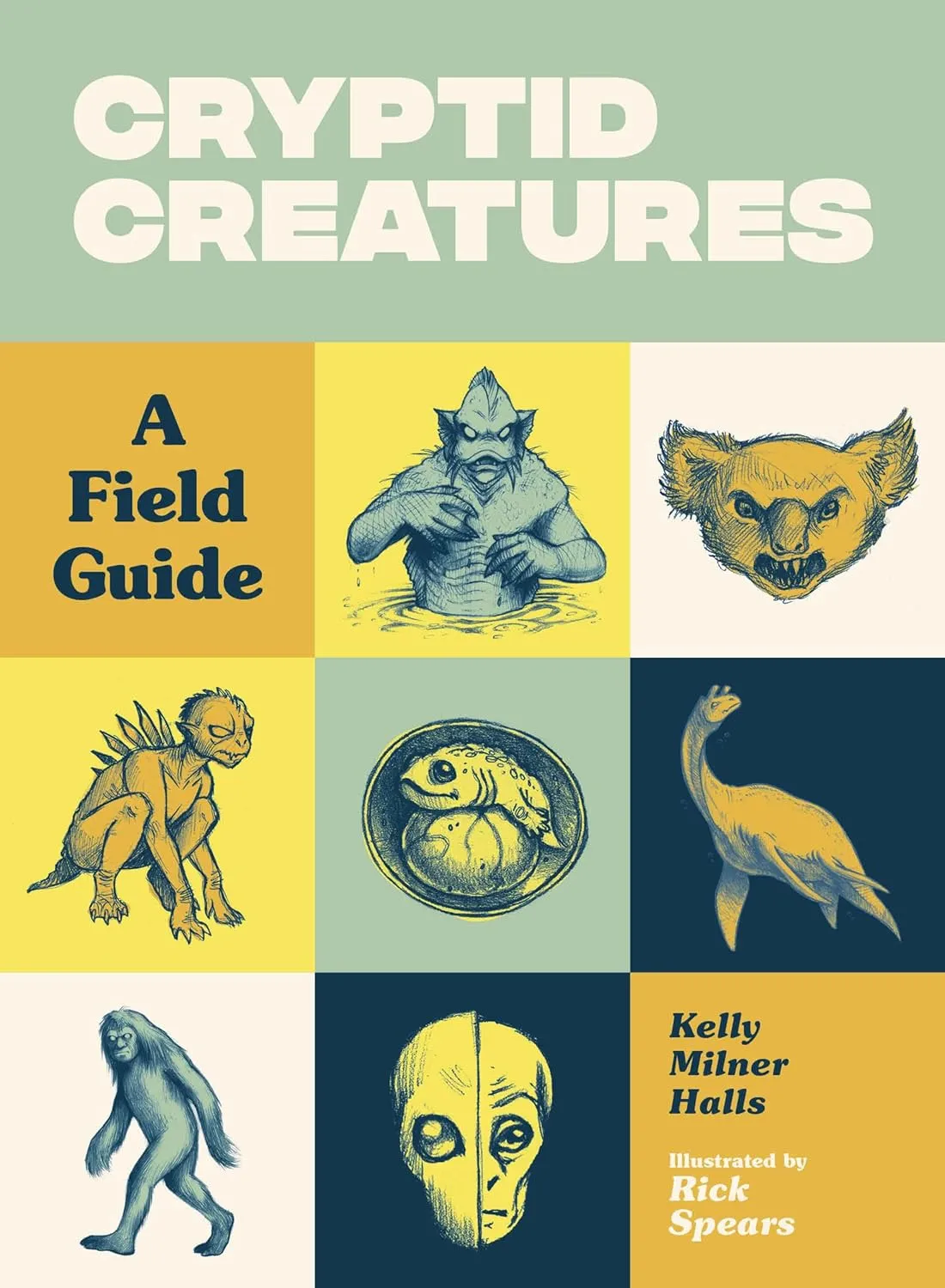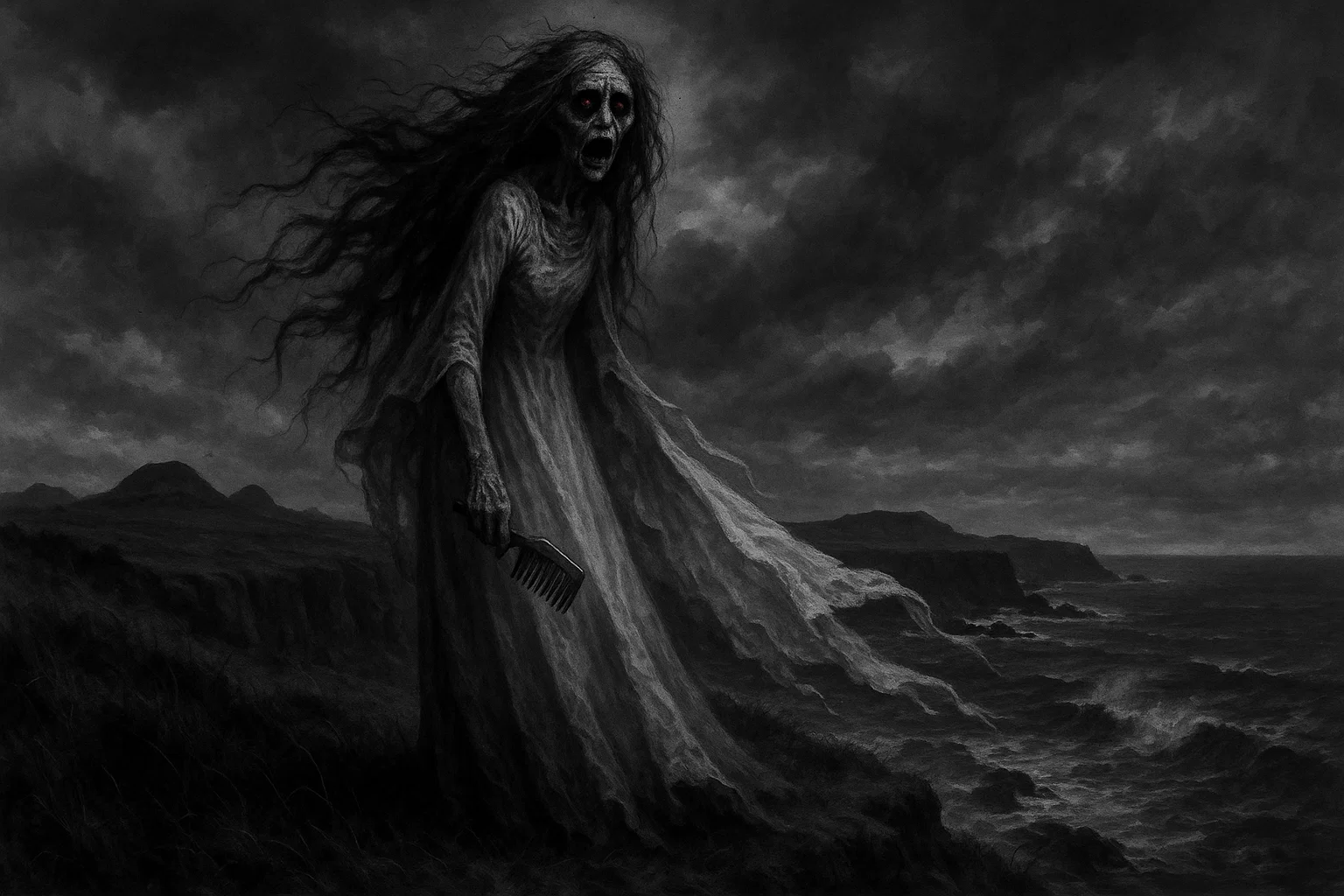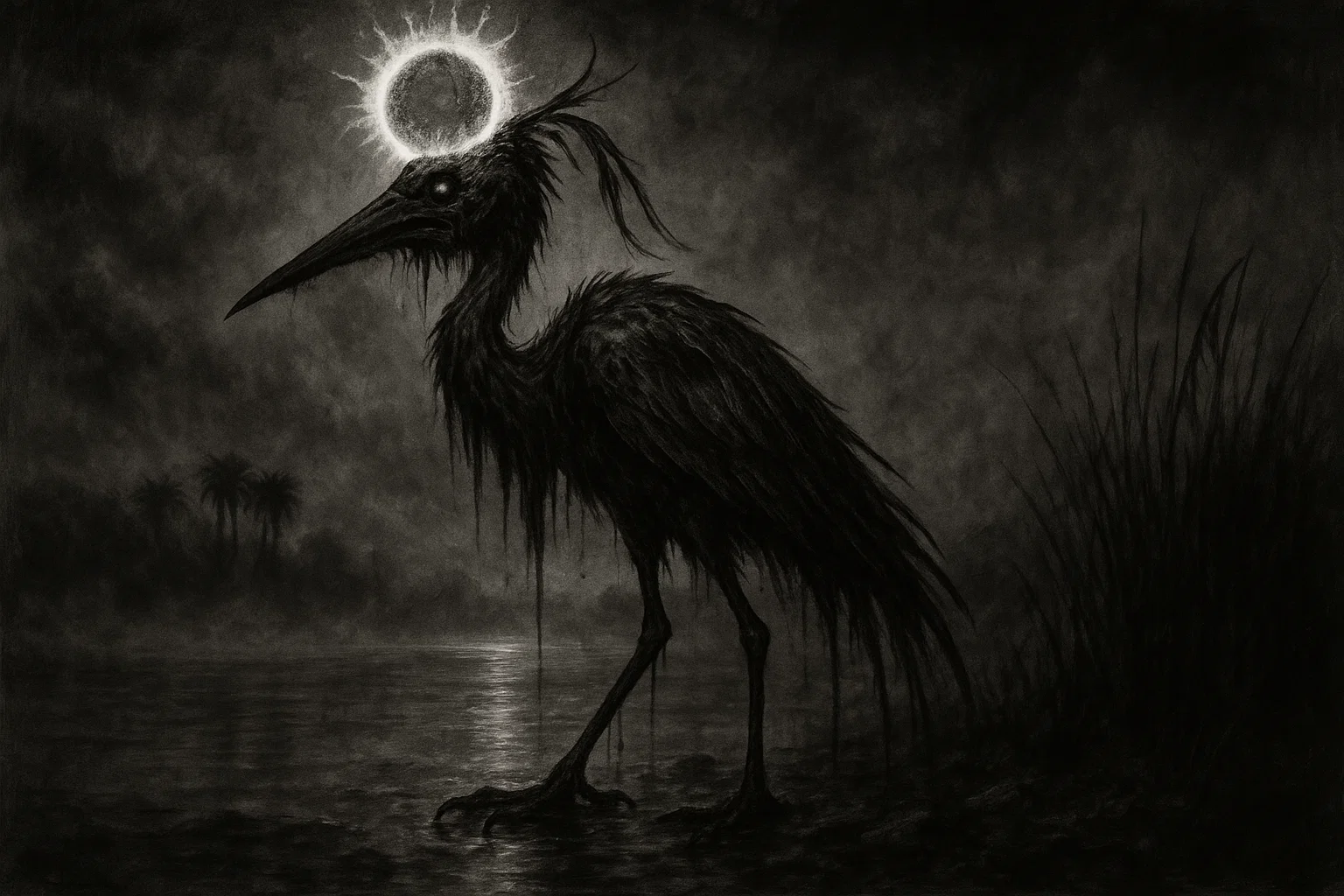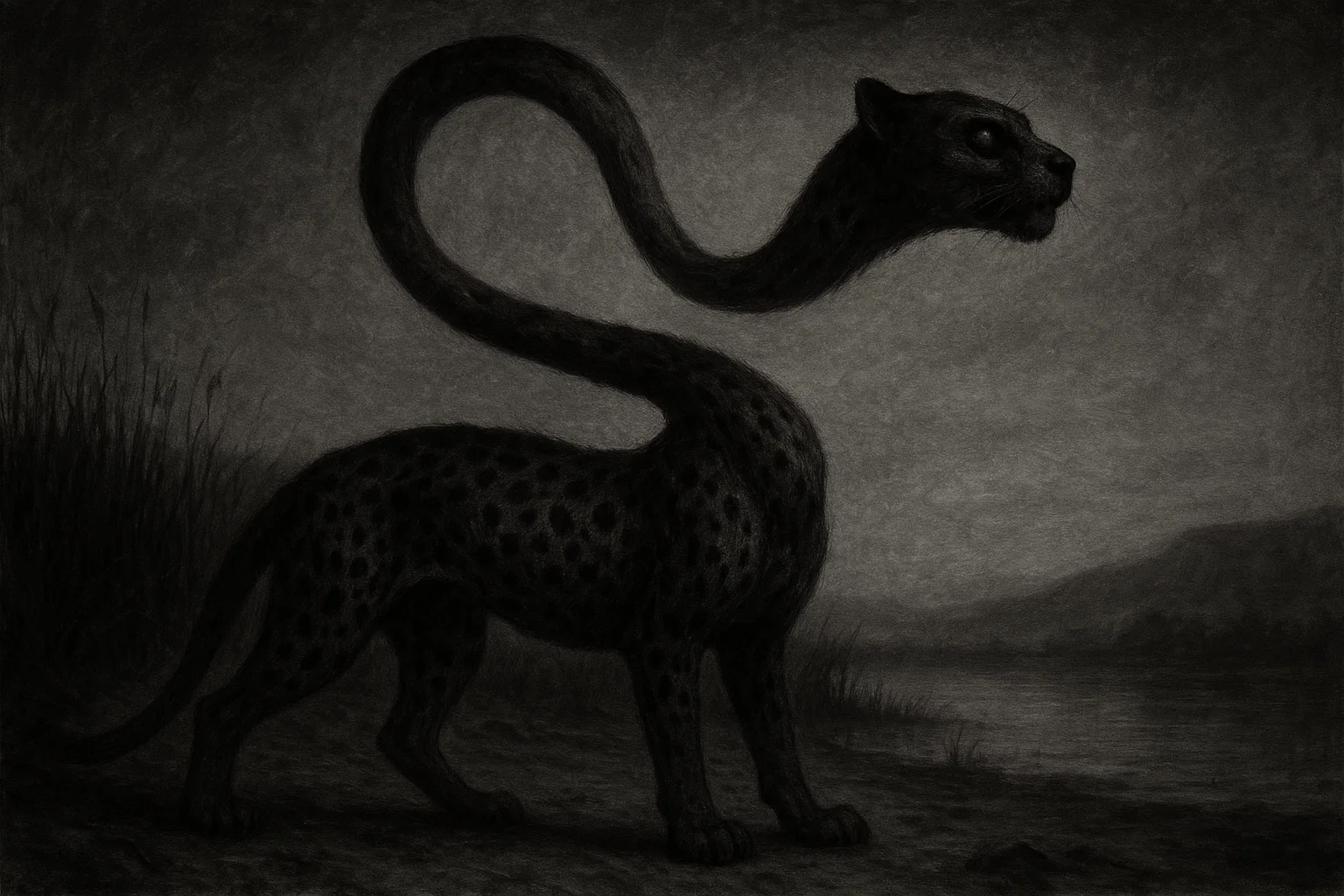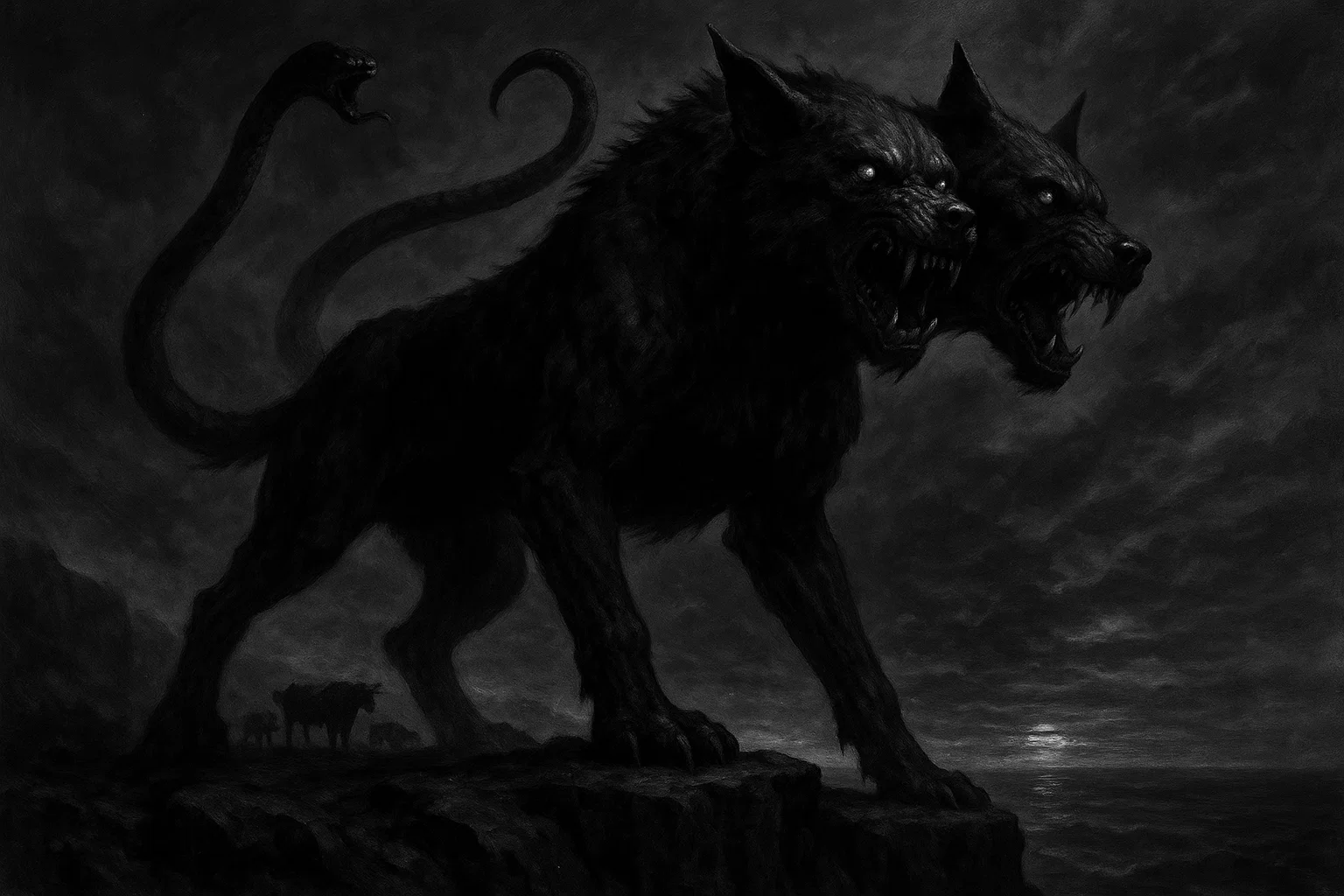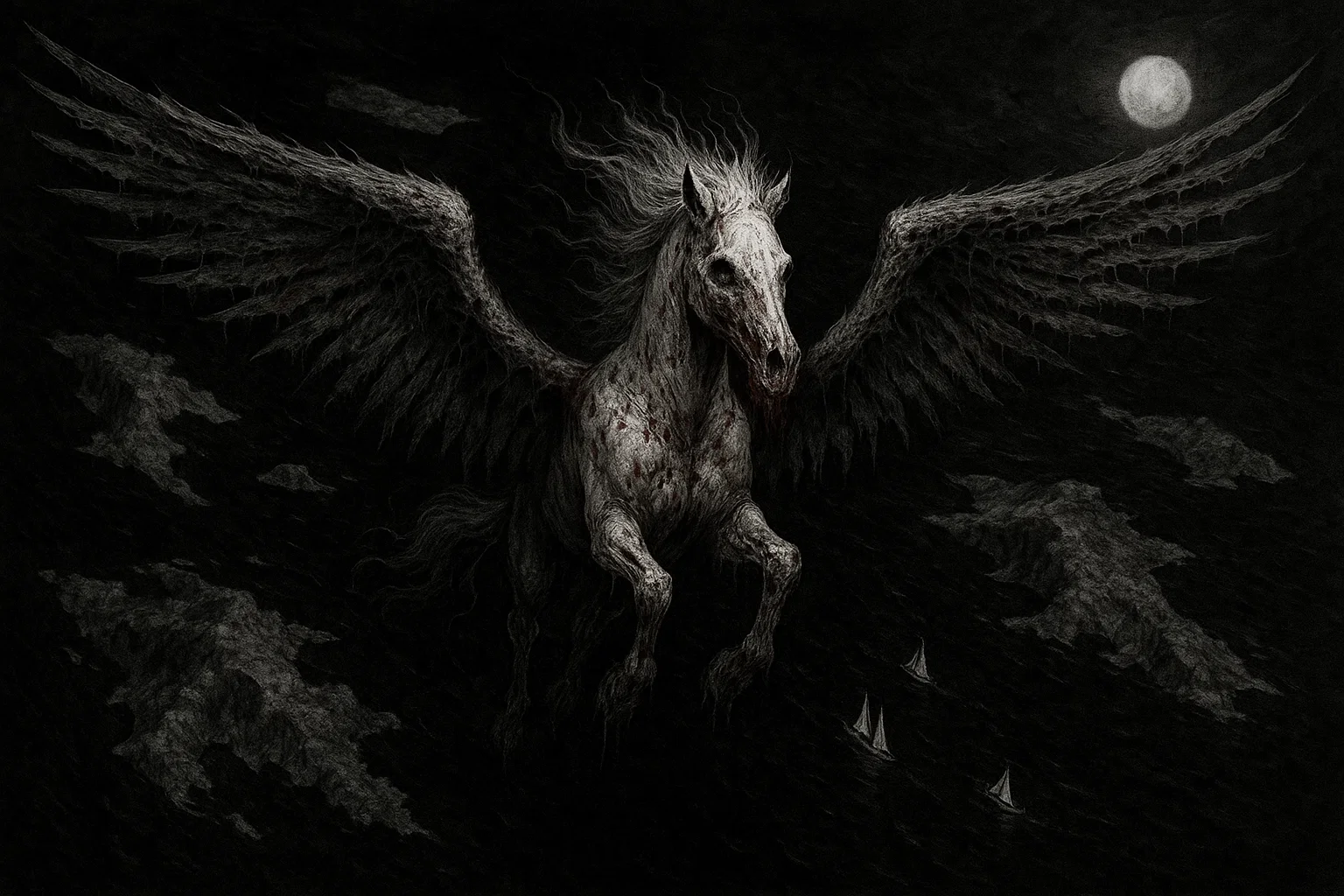The Choccolocco Monster is a well-known cryptid in the local folklore of Calhoun County, Alabama. The creature is purported to be a bizarre, hairy, foul-smelling entity that was reportedly sighted near the community of Choccolocco, particularly during the late 1960s.
Although initial reports generated local notoriety, a later investigation revealed a mundane explanation for the sightings.
Summary
Overview
| Attribute | Details |
| Name | Choccolocco Monster |
| Aliases | None known |
| Threat Level | Benign to startling |
| Habitat | Dense forests and rural areas, specifically near Choccolocco Creek and the community of Choccolocco, Alabama |
| Physical Traits | Varies, but generally described as large, bipedal, covered in long, dark hair or wearing a sheet with a cow skull head. Foul odor often noted. |
| Reported Sightings | Choccolocco, Calhoun County, Alabama |
| First Documented Sighting | Late 1960s |
| Species Classification | Humanoid or Unknown |
| Type | Terrestrial |
| Behavior & Traits | Nocturnal, known for startling motorists by jumping out from the woods onto the roadside, elusive prior to the explanation |
| Evidence | Eyewitness accounts |
| Possible Explanations | A local resident’s prank using a costume |
| Status | Largely considered debunked, but remains a fixture of local Alabama lore |
Who or What Is the Choccolocco Monster?
The Choccolocco Monster is a cryptid from Alabama folklore primarily associated with a series of reports from the late 1960s. The entity’s name is derived from the Choccolocco Creek and the unincorporated community of Choccolocco, located in the northeastern part of the state.
The creature gained local infamy as an unidentifiable entity that would appear from the woods to frighten travelers. While the initial accounts described a genuinely mysterious and unsettling cryptid, the story is considered a notable example of a local legend that eventually received a rational, human explanation.
The One Book That Turned “Monster Hunting” From Joke to Actual Science
Limited-Time: Up to 46% OFF!
Bigfoot, Loch Ness, Chupacabras, Mothman, Yeti, and dozens more – the original A-to-Z encyclopedia with 100+ fully researched cryptids, eyewitness accounts, expedition histories, and the evidence that made skeptics sweat. Loren Coleman and Jerome Clark’s 1999 classic that launched a thousand investigations.
What Does the Choccolocco Monster Look Like?
Descriptions of the Choccolocco Monster are somewhat inconsistent, but they commonly portray a large, bipedal figure. Some accounts describe a creature covered in long, dark hair or a sheet that obscured its true form. A particularly distinctive feature mentioned in the folklore is the head, often described as a cow skull or a similar large, bony structure.
The creature was generally reported to be tall, making it easily visible to motorists. It was also frequently associated with a strong, foul odor. These combined physical traits made it a memorable, if frightening, presence in the rural area where it was sighted.
Habitat
The alleged habitat of the Choccolocco Monster centers on the community of Choccolocco, Alabama, in Calhoun County. This rural area is defined by its proximity to the Talladega National Forest and the Choccolocco Creek, a major tributary of the Coosa River.
The environment consists of dense Southern Appalachian forests, characterized by hardwoods, pine, and thick underbrush, providing ample cover for any mysterious creature.
The sightings primarily occurred along rural roadsides adjacent to these wooded areas. The local climate is humid subtropical, featuring mild winters and hot, wet summers.
The region’s isolation and dense vegetation historically provided an ideal setting for a cryptid story to develop, as the environment naturally offers places for an unknown entity to conceal itself while remaining close enough to human settlements to generate reports.
You may also enjoy:
Who Is the Demon Amy (Avnas) in the Ars Goetia?
April 28, 2025
Who Is Azazel, the Demon Who Corrupted Humanity?
September 29, 2025
Choccolocco Monster Sightings
The reports of the Choccolocco Monster occurred primarily in the late 1960s in the vicinity of Choccolocco, Alabama. The sightings share the common element of a strange figure appearing to motorists on rural roads.
| Date | Place | Witness Details | Description | Reliability |
| May 1969 | Iron City Cutoff, between Choccolocco and Iron City, AL | At least eight separate drivers and local residents | A monster, described as being the size of a cow, raising up on its hind legs near the highway. Described as a “booger” with a big head and teeth and shaggy fur. | Medium: Multiple distinct eyewitness accounts in a concentrated period. |
| Late 1960s (General) | Choccolocco, Calhoun County, AL | Multiple motorists and local residents, often teenagers. | A large, hairy, or sheet-covered figure, often with a cow skull head, seen emerging from the woods by the roadside. Frequently noted for startling vehicles. | Low to Medium: Multiple general accounts consistent with the core story. |
| October 2001 | Anniston, AL (News Report) | Neal Williamson (the individual responsible) | The perpetrator’s revelation that the creature was a prank using a sheet and a cow skull to scare motorists. | High: Confession by the source of the sightings. |
Local Resident (Choccolocco, Late 1960s)
The most consistent reports describe a large, white, and bipedal figure that would unexpectedly appear by the side of the road. Witnesses often described the creature as having a cow’s head or an animal skull.
The creature’s intent appeared to be to startle people, particularly those driving past wooded areas late at night. The sheer volume of reports from the local area during this period created a palpable atmosphere of local mystery and fear.
This Book Turns the Entire United States Into One Giant X-Files Map
Limited-Time: Up to 38% OFF!
J.W. Ocker traveled the country collecting the weirdest local legends and marks the real-world locations where the Beast of Bray Road, the Dover Demon, the Wendigo, and hundreds more have been spotted. Part travel guide, part bestiary, 100% nightmare fuel.
Evidence & Investigations
The primary evidence for the Choccolocco Monster consisted of eyewitness accounts. There is no credible physical evidence, such as photographs, hair samples, footprints, or audio recordings, that has been scientifically documented or analyzed. The lack of material evidence has long been a source of skepticism about the creature’s existence.
However, the mystery of the Choccolocco Monster underwent a significant and conclusive investigation in the early 2000s. An article in The Anniston Star newspaper in October 2001 revealed the true nature of the sightings.
A local resident, Neal Williamson, confessed that he was the so-called “monster.” Williamson was a teenager during the reported sightings in the late 1960s. He admitted to creating a costume consisting of a sheet and a cow skull. He would use it to jump out of the woods onto the roadside to frighten passing motorists.
This revelation effectively served as the final, most significant piece of evidence, concluding the cryptozoological investigation into the Choccolocco Monster by attributing the reports to a decades-long prank.
Theories
The theories surrounding the Choccolocco Monster are unusual in that the mystery was largely resolved decades after the initial reports. The primary theories evolved from attempts to explain the sightings as a cryptid to accepting the mundane reality of the case.
A Juvenile Hoax (Neal Williamson’s Confession)
The most definitive explanation is that the Choccolocco Monster was a long-running practical joke. The perpetrator, Neal Williamson, revealed that the creature was nothing more than a costume constructed from a simple sheet and an actual cow skull.
The combination of the frightening appearance and the element of surprise, particularly under the cover of darkness in a rural area, was sufficient to generate multiple genuine eyewitness reports of a mysterious monster.
This theory explains the creature’s inconsistent appearance and the focus on startling behavior, as its sole purpose was to frighten people.
People Swore They Saw Something Impossible… This Book Shows You the Photos, Tracks, and DNA
Limited-Time: Up to 18% OFF!
Gorgeous full-color illustrations meet hard evidence: hair samples that don’t match any known animal, sonar hits in Loch Ness, night-vision footage, and survivor testimonies. Kelly Milner Halls separates hoax from holy-crap-this-might-be-real for every major cryptid still out there.
Misidentification of Wildlife
Before the confession, a conventional explanation would likely have involved the misidentification of known local wildlife. The American black bear is native to Alabama and is capable of standing bipedally. A bear seen in low light or from a distance could potentially be mistaken for a large, shaggy creature.
However, this theory does not adequately account for the repeated mention of the cow skull as the creature’s head, which points more directly to a man-made costume.
Local Legend and Folklore
The sightings may have been amplified or perpetuated through the power of suggestion and local storytelling. After a few initial reports—whether genuine or fabricated—local residents may have been more inclined to interpret unusual noises, shadows, or even glimpses of the prankster as confirmation of the monster’s presence.
This feedback loop is common in folklore, where the existence of the story itself helps to generate new “sightings” from people predisposed to believe or see the creature.
Comparison with Other Similar Cryptids
The Choccolocco Monster, despite its later debunking, shares behavioral and physical elements with several other North American cryptids, primarily those described as large, bipedal, and aggressive or surprising.
| Cryptid | Location | Primary Physical Trait | Behavior & Traits |
| Bigfoot (Sasquatch) | Pacific Northwest, North America | 7-10 ft tall, covered in dark brown or reddish hair | Elusive, terrestrial, nocturnal, known for loud vocalizations |
| Skunk Ape | Florida and other Southern U.S. swamps | Hairy, bipedal, approximately 6-7 ft tall, noted for a foul odor | Nocturnal, elusive, associated with swampy habitats |
| Momo the Missouri Monster | Louisiana, Missouri | Hairy, dark-colored, large head, approximately 7 ft tall | Aggressive, nocturnal, sighted near rivers and remote areas |
| Wampus Cat | Appalachian Mountains, Tennessee | Large, cat-like creature, sometimes described as half-woman, half-cat | Predatory, known for a distinctive scream |
| Beast of Busco (Oscar) | Churubusco, Indiana | Giant snapping turtle, reportedly up to 500-600 lbs | Aquatic, elusive, primarily associated with a local lake |
| Glover’sville Monster | Glover’sville, New York | Unknown, noted for strange growling and terrifying a community | Nocturnal, elusive, associated with a wooded suburban area |
| Dogman | Michigan, Wisconsin | Bipedal canine-like creature, 7 ft tall, blue or amber eyes | Aggressive, often seen in a running or pursuing posture |
| Flatwoods Monster | Flatwoods, West Virginia | Tall, non-humanoid, with a head that glows and a pleated green body | Associated with a UFO sighting, brief appearance, gaseous odor |
| Fouke Monster (Swamp Ape) | Fouke, Arkansas | Hairy, bipedal, large, approximately 7 ft tall | Known for a strong stench, seen crossing roads and near farm areas |
| Jersey Devil | Pine Barrens, New Jersey | Hooves, a goat’s head, bat-like wings, and a forked tail | Airborne and terrestrial, known for a high-pitched scream |
You may also enjoy:
Is the Lake Iliamna Monster Alaska’s Real-Life Sea Cryptid?
November 5, 2025
Who Is Lucifer? Names, Myths, Titles, and Powers
August 25, 2025
Hell’s Gate Bridge Haunting: From Tragic Deaths to Demonic Portals
September 23, 2025
Yuki-onna Legends: Tales of Love, Death, and Betrayal
September 9, 2025
Is the Choccolocco Monster Real?
The question of the Choccolocco Monster’s existence has a high degree of resolution. Based on the documented evidence, the creature described in the late 1960s sightings is not a genuinely unknown biological entity.
Neal Williamson’s 2001 confession, detailing his actions as a teenager, provides a credible and direct explanation for the monster’s appearance and behavior.
The consistent reports of a large, bipedal figure with a cow skull head emerging abruptly onto the road are fully accounted for by the sheet-and-skull costume used in the prank.
The cultural impact of the monster in Calhoun County remains. Still, the consensus within cryptozoology and local historical accounts is that the Choccolocco Monster represents a series of highly effective, but ultimately debunked, local pranks.

